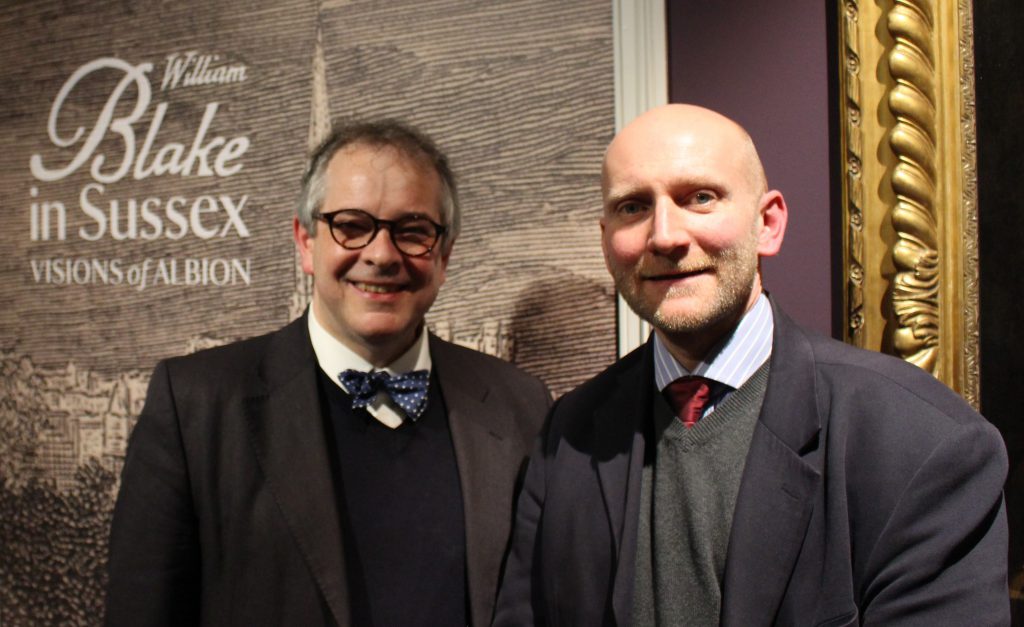
The exhibition ‘William Blake in Sussex’ at Petworth House is a triumph!
The show opened to the public last weekend to universal acclaim and is set to be one of 2018’s must see exhibitions.
The central threads of William Blake’s art and writing are beautifully woven together with the formative time that this revolutionary artist spent in Sussex. The clarity of vision of the exhibition’s curator, Andrew Loukes, has blessed us with an unusually rich and coherent narrative.
The works of art on display are visually stunning and include some of the most important in Blake’s oeuvre. They have been borrowed not only from Petworth House’s own collection but also from the British Museum, National Portrait Gallery, Tate and the National Trust’s Arlington Court, Devon.
In an age when our nation is in danger of losing her diverse regional identities with homogenised housing and High Streets it is exciting to see the National Trust daring to put on an exhibition of national importance which speaks of, and is displayed in, the context of William Blake’s story here in Sussex.
In the 18th and early 19th centuries Petworth House held an important place in the British artistic scene thanks to the 3rd Earl of Egremont’s patronage and its extraordinary collections which drew artists including Turner from across the country.

The exhibition reminds us of his patronage through Blake’s watercolour ‘The Characters in Spenser’s Faerie Queene’. The epic Elizabethan poem The Faerie Queene, upon which Blake’s drawing is based, was written against the backdrop of the Reformation by Edmund Spenser. Spenser employed a series of allegorical devices and characters to articulate the chivalric virtues of Holiness, Temperance, Chastity, Friendship, Justice, and Courtesy. Blake painted the scene in 1825. It was bought by the 3rd Earl from the artist’s widow, Catherine Boucher, for eight guineas, a sum which would have been enough to sustain her for the rest of her days. Catherine wrote to him in 1829 instructing him as to its care, saying ‘Mr Blake had a great dislike to his pictures falling into the hands of the picture cleaners.’
Blake illustrates a number of the characters from Spenser’s epic poem. At the front of the processional scene is the Red Cross Knight seated on his horse and carrying the emblem of St George, the patron saint of England, a red cross upon his shield. Beside him seated on an ass is his travelling companion, Una, who represents the true protestant church. The scene is played out beneath the tableau of the sky. The sun is flanked by the moon and a figure representing Justice among the stars. The spired Gothic Cathedral in the sky to the left contrasts with the depiction of the Tower of Babel on the right.
There is so much more to say about this extraordinary exhibition and Blake’s time in Sussex that I look forward to revisiting it with you.
Petworth House could not be a more appropriate place for this fine exhibition providing a reminder of William Blake’s artistic talent, faith and strong moral vision.
The richness and layers of this exhibition will repay each and every visit. I am delighted that Toovey’s are headline sponsors of this exceptional show which understandably is attracting national interest.
The exhibition runs at Petworth House in West Sussex until the 25th March 2018. Entry is by pre-booked timed tickets which can be purchased online at www.nationaltrust.org.uk/petworth. Discounted tickets are available to National Trust Members.
By Rupert Toovey, a senior director of Toovey’s, the leading fine art auction house in West Sussex, based on the A24 at Washington. Originally published in the West Sussex Gazette.